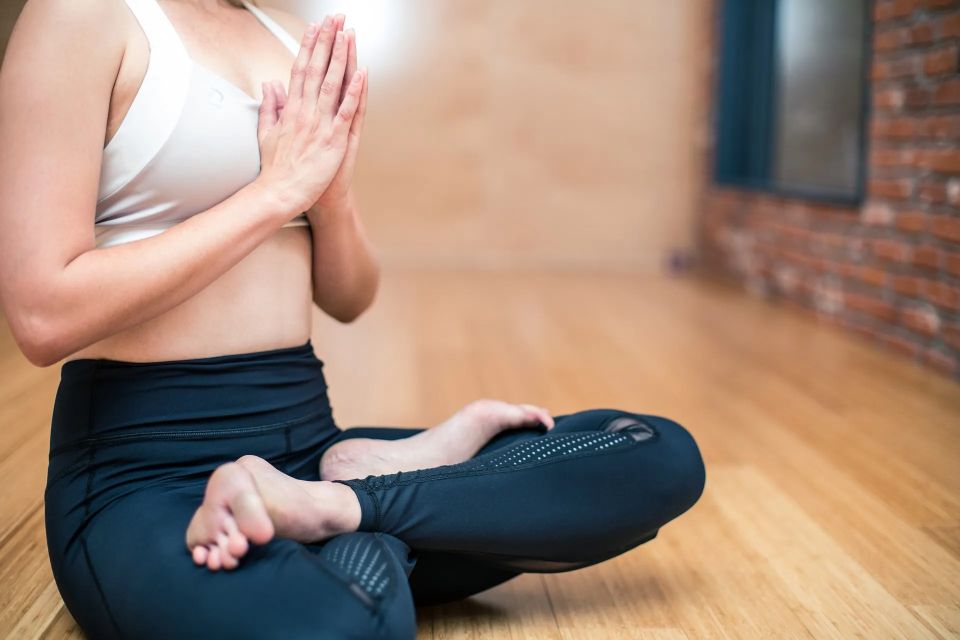
Easy Yoga for Beginners
Starting yoga as a beginner is an excellent decision for your physical and mental well-being! Here's a simple routine to get you started:
Mountain Pose (Tadasana):
Stand with your feet together, arms by your sides.
Engage your thighs, lift your chest, and roll your shoulders back.
Take deep breaths, feeling grounded like a mountain.
Child's Pose (Balasana):
Kneel on the floor, sit back on your heels, and fold forward.
Extend your arms in front of you or rest them by your sides.
Relax your forehead to the ground and breathe deeply.
Cat-Cow Stretch:
Start on your hands and knees with a flat back.
Inhale, arch your back, lift your tailbone and head (Cow Pose).
Exhale, round your spine, tuck your chin to your chest (Cat Pose).
Repeat, flowing smoothly between the two poses.
Downward Facing Dog (Adho Mukha Svanasana):
From hands and knees, lift your hips up and back.
Straighten your arms and legs, forming an inverted V shape.
Press your palms into the ground and heels towards the floor.
Warrior I (Virabhadrasana I):
From Downward Dog, step your right foot forward between your hands.
Rotate your left heel down, aligning it with the right heel.
Inhale, raise your arms overhead, bending your right knee.
Hold the pose, feeling strong and grounded.
Warrior II (Virabhadrasana II):
From Warrior I, open your hips and arms to the side.
Extend your arms parallel to the floor, gaze over your right hand.
Keep your right knee bent, aligning it over your ankle.
Tree Pose (Vrksasana):
Stand on your left foot, bend your right knee, and place your right foot on your left inner thigh or calf.
Press your foot into your leg and your leg into your foot.
Bring your palms together at your heart center or extend your arms overhead.
Corpse Pose (Savasana):
Lie flat on your back with your legs slightly apart and arms by your sides.
Close your eyes, relax your entire body, and focus on your breath.
Stay in this pose for a few minutes, allowing your body to integrate the benefits of your practice.
Remember to listen to your body and modify poses as needed. Enjoy your yoga journey!
Mountain Pose (Tadasana):
Stand with your feet together, arms by your sides.
Engage your thighs, lift your chest, and roll your shoulders back.
Take deep breaths, feeling grounded like a mountain.
Child's Pose (Balasana):
Kneel on the floor, sit back on your heels, and fold forward.
Extend your arms in front of you or rest them by your sides.
Relax your forehead to the ground and breathe deeply.
Cat-Cow Stretch:
Start on your hands and knees with a flat back.
Inhale, arch your back, lift your tailbone and head (Cow Pose).
Exhale, round your spine, tuck your chin to your chest (Cat Pose).
Repeat, flowing smoothly between the two poses.
Downward Facing Dog (Adho Mukha Svanasana):
From hands and knees, lift your hips up and back.
Straighten your arms and legs, forming an inverted V shape.
Press your palms into the ground and heels towards the floor.
Warrior I (Virabhadrasana I):
From Downward Dog, step your right foot forward between your hands.
Rotate your left heel down, aligning it with the right heel.
Inhale, raise your arms overhead, bending your right knee.
Hold the pose, feeling strong and grounded.
Warrior II (Virabhadrasana II):
From Warrior I, open your hips and arms to the side.
Extend your arms parallel to the floor, gaze over your right hand.
Keep your right knee bent, aligning it over your ankle.
Tree Pose (Vrksasana):
Stand on your left foot, bend your right knee, and place your right foot on your left inner thigh or calf.
Press your foot into your leg and your leg into your foot.
Bring your palms together at your heart center or extend your arms overhead.
Corpse Pose (Savasana):
Lie flat on your back with your legs slightly apart and arms by your sides.
Close your eyes, relax your entire body, and focus on your breath.
Stay in this pose for a few minutes, allowing your body to integrate the benefits of your practice.
Remember to listen to your body and modify poses as needed. Enjoy your yoga journey!

Yoga with Animals: A Harmonious Blend of Nature and Tranquility
In recent years, yoga enthusiasts have embraced a delightful and therapeutic twist on traditional practice by incorporating animals into their routines. This fusion, often referred to as "animal yoga," has gained popularity for its unique ability to enhance the physical, mental, and emotional benefits of yoga. Whether it’s the playful energy of puppies, the calm presence of goats, or the serene companionship of cats, performing yoga with animals brings a new dimension to the mat. Let's explore the wonderful world of yoga with animals and why you might want to give it a try.
The Origins of Animal Yoga
Animal yoga isn't a new concept, but its rise in mainstream popularity is relatively recent. The practice began to catch on as people sought innovative ways to make yoga more engaging and to reduce stress in their lives. The concept is simple: animals are naturally calming and joyful creatures, and their presence can make the yoga experience more enjoyable and less intimidating, especially for beginners.
Types of Animal Yoga
Goat Yoga: Perhaps the most famous form of animal yoga, goat yoga involves practicing yoga in a space where goats roam freely. These gentle animals often interact with participants by climbing on them or nuzzling them, adding a playful and spontaneous element to the session. The unexpected antics of goats can lead to laughter and joy, which helps in releasing stress and enhancing the overall experience.
Puppy Yoga: Combining the benefits of yoga with the undeniable charm of puppies, puppy yoga sessions are designed to boost your mood and reduce anxiety. Puppies, with their boundless energy and affection, create a dynamic environment that encourages interaction and relaxation. The presence of puppies has been shown to elevate oxytocin levels, also known as the "love hormone," making it a perfect way to enhance emotional well-being.
Cat Yoga: For those who prefer a more tranquil setting, cat yoga offers a serene and calming experience. Cats, known for their graceful movements and independent nature, provide a peaceful presence that complements the meditative aspects of yoga. Their quiet purrs and gentle companionship can help deepen relaxation and mindfulness during practice.
Bunny Yoga: Another delightful variant is bunny yoga, where adorable bunnies hop around during the session. Their soft fur and gentle nature provide a soothing atmosphere, making it easier to unwind and focus on the meditative aspects of yoga.
Benefits of Yoga with Animals
Physical Benefits: While the primary aim of yoga is to improve flexibility, strength, and balance, incorporating animals can also encourage more natural and spontaneous movement. For instance, attempting to balance with a goat perched on your back or reaching to pet a curious puppy can engage different muscle groups and enhance coordination.
Mental and Emotional Benefits: Animals have a profound impact on our mental and emotional well-being. Their unconditional love and playful nature can reduce feelings of anxiety and depression. The act of petting an animal releases endorphins and lowers cortisol levels, promoting a sense of calm and happiness.
Social Benefits: Animal yoga sessions often create a sense of community among participants. Sharing the joy and laughter that animals bring fosters social bonds and can lead to lasting friendships. It’s a wonderful way to connect with others who share a love for animals and a passion for yoga.
Mindfulness and Presence: Animals live in the moment, and their presence during yoga practice can teach us to do the same. Being around animals encourages mindfulness, helping us focus on the present rather than getting caught up in past regrets or future worries.
Tips for a Successful Animal Yoga Session
Choose the Right Setting: Ensure the space is safe and comfortable for both the animals and participants. An open, outdoor environment can be ideal for animals like goats, while a cozy indoor setting might suit cats or puppies better.
Respect the Animals: Remember that the animals are there to enhance the experience, not to be treated as props. Be gentle and mindful of their comfort and needs.
Stay Open-Minded: Animal yoga is unpredictable, and that’s part of its charm. Embrace the unexpected and go with the flow.
Focus on the Experience: Rather than aiming for a perfect yoga pose, focus on enjoying the moment and the joy that the animals bring.
Final Thoughts
Yoga with animals offers a delightful blend of exercise, relaxation, and animal companionship. It’s a practice that reminds us to find joy in the present moment and to embrace the playful, unpredictable nature of life. Whether you're a seasoned yogi or a beginner, incorporating animals into your yoga routine can add a new layer of fun and fulfillment. So, the next time you roll out your yoga mat, consider inviting a furry friend to join you on your journey to tranquility and well-being. Namaste!
The Origins of Animal Yoga
Animal yoga isn't a new concept, but its rise in mainstream popularity is relatively recent. The practice began to catch on as people sought innovative ways to make yoga more engaging and to reduce stress in their lives. The concept is simple: animals are naturally calming and joyful creatures, and their presence can make the yoga experience more enjoyable and less intimidating, especially for beginners.
Types of Animal Yoga
Goat Yoga: Perhaps the most famous form of animal yoga, goat yoga involves practicing yoga in a space where goats roam freely. These gentle animals often interact with participants by climbing on them or nuzzling them, adding a playful and spontaneous element to the session. The unexpected antics of goats can lead to laughter and joy, which helps in releasing stress and enhancing the overall experience.
Puppy Yoga: Combining the benefits of yoga with the undeniable charm of puppies, puppy yoga sessions are designed to boost your mood and reduce anxiety. Puppies, with their boundless energy and affection, create a dynamic environment that encourages interaction and relaxation. The presence of puppies has been shown to elevate oxytocin levels, also known as the "love hormone," making it a perfect way to enhance emotional well-being.
Cat Yoga: For those who prefer a more tranquil setting, cat yoga offers a serene and calming experience. Cats, known for their graceful movements and independent nature, provide a peaceful presence that complements the meditative aspects of yoga. Their quiet purrs and gentle companionship can help deepen relaxation and mindfulness during practice.
Bunny Yoga: Another delightful variant is bunny yoga, where adorable bunnies hop around during the session. Their soft fur and gentle nature provide a soothing atmosphere, making it easier to unwind and focus on the meditative aspects of yoga.
Benefits of Yoga with Animals
Physical Benefits: While the primary aim of yoga is to improve flexibility, strength, and balance, incorporating animals can also encourage more natural and spontaneous movement. For instance, attempting to balance with a goat perched on your back or reaching to pet a curious puppy can engage different muscle groups and enhance coordination.
Mental and Emotional Benefits: Animals have a profound impact on our mental and emotional well-being. Their unconditional love and playful nature can reduce feelings of anxiety and depression. The act of petting an animal releases endorphins and lowers cortisol levels, promoting a sense of calm and happiness.
Social Benefits: Animal yoga sessions often create a sense of community among participants. Sharing the joy and laughter that animals bring fosters social bonds and can lead to lasting friendships. It’s a wonderful way to connect with others who share a love for animals and a passion for yoga.
Mindfulness and Presence: Animals live in the moment, and their presence during yoga practice can teach us to do the same. Being around animals encourages mindfulness, helping us focus on the present rather than getting caught up in past regrets or future worries.
Tips for a Successful Animal Yoga Session
Choose the Right Setting: Ensure the space is safe and comfortable for both the animals and participants. An open, outdoor environment can be ideal for animals like goats, while a cozy indoor setting might suit cats or puppies better.
Respect the Animals: Remember that the animals are there to enhance the experience, not to be treated as props. Be gentle and mindful of their comfort and needs.
Stay Open-Minded: Animal yoga is unpredictable, and that’s part of its charm. Embrace the unexpected and go with the flow.
Focus on the Experience: Rather than aiming for a perfect yoga pose, focus on enjoying the moment and the joy that the animals bring.
Final Thoughts
Yoga with animals offers a delightful blend of exercise, relaxation, and animal companionship. It’s a practice that reminds us to find joy in the present moment and to embrace the playful, unpredictable nature of life. Whether you're a seasoned yogi or a beginner, incorporating animals into your yoga routine can add a new layer of fun and fulfillment. So, the next time you roll out your yoga mat, consider inviting a furry friend to join you on your journey to tranquility and well-being. Namaste!

Finding the Best Time of Day to Practice Yoga
Yoga, a practice that harmonizes body, mind, and spirit, can be profoundly beneficial at any time of the day. However, the effectiveness of your practice can be influenced by the time you choose to roll out your mat. Whether you’re a sunrise seeker, a midday meditator, or a twilight practitioner, here’s a guide to help you decide the best time of day for your yoga practice.
Morning Yoga: Embrace the Sunrise
Benefits: Energizing Start: Practicing yoga in the morning can invigorate your body and mind, setting a positive tone for the rest of the day. Morning yoga helps wake up your body, increases your circulation, and boosts your energy levels.
Mental Clarity: Morning sessions often bring mental clarity and focus, which can enhance productivity and concentration throughout the day.
Consistency: Morning is a quieter, less disrupted time for many people, making it easier to establish a consistent routine.
Ideal Poses:
Sun Salutations (Surya Namaskar): A sequence that warms up the body, promotes flexibility, and awakens your energy.
Warrior Poses: To build strength and confidence.
Tree Pose (Vrksasana): For balance and grounding.
Considerations: If you're not a morning person, it might take some time to adjust. Start with gentle stretches and gradually move to more dynamic poses as your body wakes up.
Midday Yoga: Recharge and Refocus
Benefits: Break from Routine: A midday practice can provide a refreshing break from work or daily responsibilities, helping to alleviate stress and tension.
Enhanced Flexibility: Your body is typically more flexible and warmed up by midday, allowing for a deeper practice.
Reenergizing: It can combat the afternoon slump, re-energizing you for the rest of the day.
Ideal Poses:
Cat-Cow Stretch (Marjaryasana-Bitilasana): To release tension in the spine.
Seated Forward Bend (Paschimottanasana): To calm the mind and stretch the back body.
Eagle Pose (Garudasana): To improve focus and balance.
Considerations: Finding a quiet space and a time slot in a busy schedule can be challenging, but even a short 20-minute session can be incredibly beneficial.
Evening Yoga: Unwind and Relax
Benefits: Stress Relief: Evening yoga can be a perfect way to decompress and release the stresses accumulated throughout the day.
Improved Sleep: Gentle yoga and relaxation techniques in the evening can prepare your body and mind for a restful night's sleep.
Flexibility and Recovery: It aids in muscle recovery and flexibility, especially after a long day of work or physical activity.
Ideal Poses:
Legs Up the Wall (Viparita Karani): To relax the lower back and promote circulation.
Child’s Pose (Balasana): To calm the mind and gently stretch the back.
Corpse Pose (Savasana): For deep relaxation and mindfulness.
Considerations: Avoid vigorous styles like Power Yoga late in the evening as they might energize you too much and make it harder to fall asleep.
Conclusion: Listen to Your Body
Ultimately, the best time to practice yoga depends on your individual lifestyle, body rhythms, and personal preferences. Experiment with practicing at different times of the day to discover what feels best for you. Whether you choose to greet the sun with Sun Salutations, take a midday break for some rejuvenating stretches, or unwind with calming evening poses, the key is consistency and listening to your body’s needs.
Yoga is not just a physical practice but a journey towards inner peace and balance. No matter when you practice, each session is a step closer to a healthier, more centered you. So, unroll your mat, take a deep breath, and enjoy the journey at your own pace and time. Namaste.
Morning Yoga: Embrace the Sunrise
Benefits: Energizing Start: Practicing yoga in the morning can invigorate your body and mind, setting a positive tone for the rest of the day. Morning yoga helps wake up your body, increases your circulation, and boosts your energy levels.
Mental Clarity: Morning sessions often bring mental clarity and focus, which can enhance productivity and concentration throughout the day.
Consistency: Morning is a quieter, less disrupted time for many people, making it easier to establish a consistent routine.
Ideal Poses:
Sun Salutations (Surya Namaskar): A sequence that warms up the body, promotes flexibility, and awakens your energy.
Warrior Poses: To build strength and confidence.
Tree Pose (Vrksasana): For balance and grounding.
Considerations: If you're not a morning person, it might take some time to adjust. Start with gentle stretches and gradually move to more dynamic poses as your body wakes up.
Midday Yoga: Recharge and Refocus
Benefits: Break from Routine: A midday practice can provide a refreshing break from work or daily responsibilities, helping to alleviate stress and tension.
Enhanced Flexibility: Your body is typically more flexible and warmed up by midday, allowing for a deeper practice.
Reenergizing: It can combat the afternoon slump, re-energizing you for the rest of the day.
Ideal Poses:
Cat-Cow Stretch (Marjaryasana-Bitilasana): To release tension in the spine.
Seated Forward Bend (Paschimottanasana): To calm the mind and stretch the back body.
Eagle Pose (Garudasana): To improve focus and balance.
Considerations: Finding a quiet space and a time slot in a busy schedule can be challenging, but even a short 20-minute session can be incredibly beneficial.
Evening Yoga: Unwind and Relax
Benefits: Stress Relief: Evening yoga can be a perfect way to decompress and release the stresses accumulated throughout the day.
Improved Sleep: Gentle yoga and relaxation techniques in the evening can prepare your body and mind for a restful night's sleep.
Flexibility and Recovery: It aids in muscle recovery and flexibility, especially after a long day of work or physical activity.
Ideal Poses:
Legs Up the Wall (Viparita Karani): To relax the lower back and promote circulation.
Child’s Pose (Balasana): To calm the mind and gently stretch the back.
Corpse Pose (Savasana): For deep relaxation and mindfulness.
Considerations: Avoid vigorous styles like Power Yoga late in the evening as they might energize you too much and make it harder to fall asleep.
Conclusion: Listen to Your Body
Ultimately, the best time to practice yoga depends on your individual lifestyle, body rhythms, and personal preferences. Experiment with practicing at different times of the day to discover what feels best for you. Whether you choose to greet the sun with Sun Salutations, take a midday break for some rejuvenating stretches, or unwind with calming evening poses, the key is consistency and listening to your body’s needs.
Yoga is not just a physical practice but a journey towards inner peace and balance. No matter when you practice, each session is a step closer to a healthier, more centered you. So, unroll your mat, take a deep breath, and enjoy the journey at your own pace and time. Namaste.
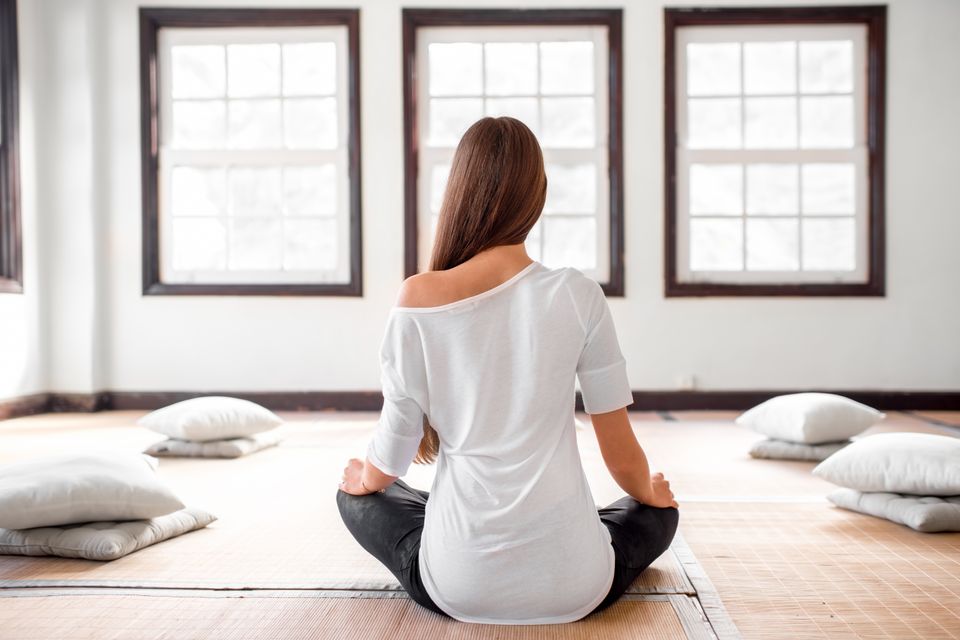
Meditation in Harmony with Yoga
Meditation and yoga are two practices that complement each other and can be combined to enhance overall well-being and spiritual growth. While yoga primarily focuses on physical postures (asanas) and breath control (pranayama), meditation involves training the mind to achieve a state of calmness and clarity. When practiced together, they create a harmonious synergy, promoting physical, mental, and spiritual balance.
Before engaging in yoga, take a few moments to center yourself through meditation. Sit quietly, close your eyes, and focus on your breath. Observe any thoughts or sensations that arise, allowing them to pass without attachment. This helps to create a calm and focused mindset for your yoga practice.
During your yoga practice, approach each posture with mindfulness. Be fully present in the moment, paying attention to your breath, sensations in the body, and the alignment of your movements. This cultivates a meditative state, where the mind is focused and aware.
Breathing is an essential component of both meditation and yoga. Throughout your yoga practice, maintain awareness of your breath. Sync your breath with each movement, inhaling during expansion and exhaling during contraction. This deepens your mind-body connection and promotes relaxation.
After completing your yoga practice, transition into Savasana (Corpse Pose), the final relaxation pose. This is an ideal time to enter a meditative state. Lie down comfortably, close your eyes, and allow your body to fully relax. Focus on your breath or use a guided meditation to deepen your relaxation and inner awareness.
Alternatively, you can conclude your yoga session with a separate meditation practice. Choose a meditation technique that resonates with you, such as mindfulness meditation, loving-kindness meditation, or mantra repetition. Find a quiet space, sit comfortably, and dedicate a few minutes to stillness and self-reflection.
Yoga is rooted in ancient philosophical teachings, such as the eight limbs of yoga outlined by Patanjali. Meditation helps us explore and internalize these teachings more deeply. Set aside time for studying yoga philosophy and reflect on its principles during your meditation practice. This integration can enhance your understanding and personal growth.
Remember, both meditation and yoga are personal practices, and it's important to find a routine that suits your needs and preferences. Experiment with different styles and techniques to discover what works best for you. Consistency and patience are key, as the benefits of meditation and yoga unfold over time, promoting harmony and well-being in all aspects of your life.
Before engaging in yoga, take a few moments to center yourself through meditation. Sit quietly, close your eyes, and focus on your breath. Observe any thoughts or sensations that arise, allowing them to pass without attachment. This helps to create a calm and focused mindset for your yoga practice.
During your yoga practice, approach each posture with mindfulness. Be fully present in the moment, paying attention to your breath, sensations in the body, and the alignment of your movements. This cultivates a meditative state, where the mind is focused and aware.
Breathing is an essential component of both meditation and yoga. Throughout your yoga practice, maintain awareness of your breath. Sync your breath with each movement, inhaling during expansion and exhaling during contraction. This deepens your mind-body connection and promotes relaxation.
After completing your yoga practice, transition into Savasana (Corpse Pose), the final relaxation pose. This is an ideal time to enter a meditative state. Lie down comfortably, close your eyes, and allow your body to fully relax. Focus on your breath or use a guided meditation to deepen your relaxation and inner awareness.
Alternatively, you can conclude your yoga session with a separate meditation practice. Choose a meditation technique that resonates with you, such as mindfulness meditation, loving-kindness meditation, or mantra repetition. Find a quiet space, sit comfortably, and dedicate a few minutes to stillness and self-reflection.
Yoga is rooted in ancient philosophical teachings, such as the eight limbs of yoga outlined by Patanjali. Meditation helps us explore and internalize these teachings more deeply. Set aside time for studying yoga philosophy and reflect on its principles during your meditation practice. This integration can enhance your understanding and personal growth.
Remember, both meditation and yoga are personal practices, and it's important to find a routine that suits your needs and preferences. Experiment with different styles and techniques to discover what works best for you. Consistency and patience are key, as the benefits of meditation and yoga unfold over time, promoting harmony and well-being in all aspects of your life.
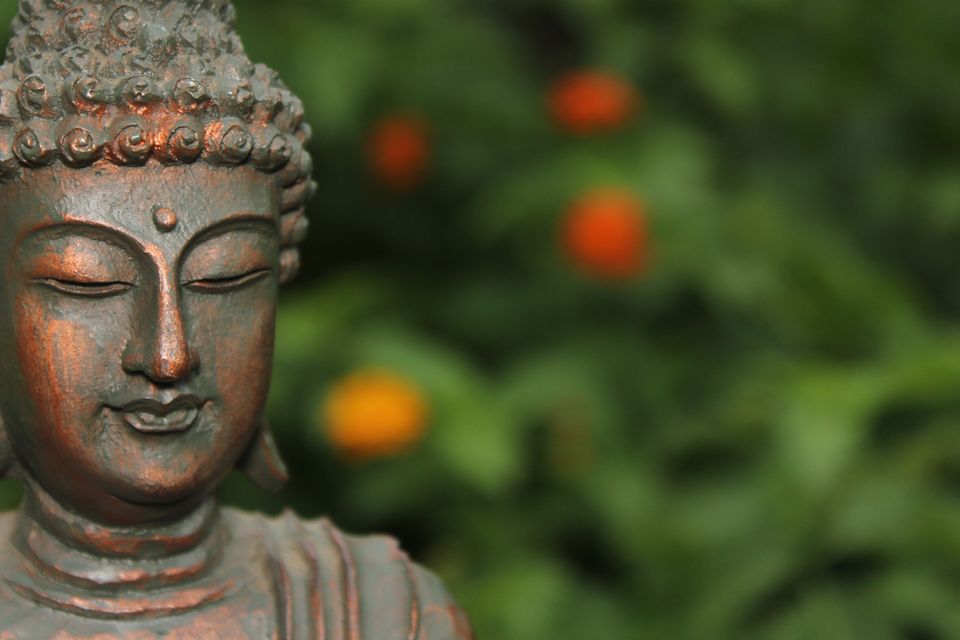
The History of Yoga
The history of yoga is a rich and ancient one, with roots that can be traced back thousands of years. The practice of yoga originated in the Indian subcontinent and has evolved over time, encompassing various philosophical, spiritual, and physical aspects.
The exact origins of yoga are somewhat uncertain due to the lack of written records from its early days. However, archaeological evidence suggests that yoga has been practiced for at least 5,000 years. The earliest known mention of yoga can be found in the ancient Indian scriptures called the Vedas, specifically in the Rigveda, which dates back to around 1500 BCE. The Vedas contain hymns and rituals that emphasize the connection between the mind, body, and spirit.
The development of yoga continued with the composition of the Upanishads, philosophical texts that delve deeper into the nature of reality and the self. These texts introduced the concepts of meditation, breath control, and the exploration of inner consciousness. One of the most famous Upanishads, the Bhagavad Gita, also includes teachings on yoga and its significance in attaining self-realization.
Around the 2nd century BCE, the Yoga Sutras of Patanjali were compiled. Patanjali is often considered the father of classical yoga. The Yoga Sutras outline the eight limbs of yoga, which provide a comprehensive framework for spiritual and physical practice. These limbs include ethical principles, physical postures (asanas), breath control (pranayama), meditation, and contemplation.
Yoga continued to evolve and diversify over the centuries, with different schools and traditions emerging. In the 9th and 10th centuries, the Hatha Yoga tradition emerged, focusing on physical postures and breath control techniques to prepare the body and mind for meditation. Hatha Yoga laid the foundation for many modern yoga styles.
In the late 19th and early 20th centuries, yoga gained attention in the West through the efforts of Indian yogis and scholars. Swami Vivekananda's speeches at the Parliament of the World's Religions in 1893 in Chicago played a significant role in introducing yoga and Hindu philosophy to a Western audience. Several other prominent Indian teachers, such as Swami Sivananda and Paramahansa Yogananda, also helped popularize yoga in the West.
In the mid-20th century, yoga underwent further transformation with the rise of modern postural yoga. Influenced by Western gymnastics and physical culture, teachers like Tirumalai Krishnamacharya and his students, including B.K.S. Iyengar and Pattabhi Jois, developed dynamic styles of yoga that emphasized physical alignment and strength. These styles, such as Iyengar Yoga and Ashtanga Yoga, gained popularity globally and continue to be practiced widely today.
In recent decades, yoga has become a global phenomenon, with millions of practitioners worldwide. It is now recognized for its physical and mental health benefits, as well as its spiritual and philosophical dimensions. Numerous variations and hybrid forms of yoga have emerged, catering to different needs and preferences.
Overall, the history of yoga is a testament to its enduring appeal and adaptability. From its ancient roots in India to its global presence today, yoga has evolved and transformed, while maintaining its core principles of holistic well-being and self-realization.
The exact origins of yoga are somewhat uncertain due to the lack of written records from its early days. However, archaeological evidence suggests that yoga has been practiced for at least 5,000 years. The earliest known mention of yoga can be found in the ancient Indian scriptures called the Vedas, specifically in the Rigveda, which dates back to around 1500 BCE. The Vedas contain hymns and rituals that emphasize the connection between the mind, body, and spirit.
The development of yoga continued with the composition of the Upanishads, philosophical texts that delve deeper into the nature of reality and the self. These texts introduced the concepts of meditation, breath control, and the exploration of inner consciousness. One of the most famous Upanishads, the Bhagavad Gita, also includes teachings on yoga and its significance in attaining self-realization.
Around the 2nd century BCE, the Yoga Sutras of Patanjali were compiled. Patanjali is often considered the father of classical yoga. The Yoga Sutras outline the eight limbs of yoga, which provide a comprehensive framework for spiritual and physical practice. These limbs include ethical principles, physical postures (asanas), breath control (pranayama), meditation, and contemplation.
Yoga continued to evolve and diversify over the centuries, with different schools and traditions emerging. In the 9th and 10th centuries, the Hatha Yoga tradition emerged, focusing on physical postures and breath control techniques to prepare the body and mind for meditation. Hatha Yoga laid the foundation for many modern yoga styles.
In the late 19th and early 20th centuries, yoga gained attention in the West through the efforts of Indian yogis and scholars. Swami Vivekananda's speeches at the Parliament of the World's Religions in 1893 in Chicago played a significant role in introducing yoga and Hindu philosophy to a Western audience. Several other prominent Indian teachers, such as Swami Sivananda and Paramahansa Yogananda, also helped popularize yoga in the West.
In the mid-20th century, yoga underwent further transformation with the rise of modern postural yoga. Influenced by Western gymnastics and physical culture, teachers like Tirumalai Krishnamacharya and his students, including B.K.S. Iyengar and Pattabhi Jois, developed dynamic styles of yoga that emphasized physical alignment and strength. These styles, such as Iyengar Yoga and Ashtanga Yoga, gained popularity globally and continue to be practiced widely today.
In recent decades, yoga has become a global phenomenon, with millions of practitioners worldwide. It is now recognized for its physical and mental health benefits, as well as its spiritual and philosophical dimensions. Numerous variations and hybrid forms of yoga have emerged, catering to different needs and preferences.
Overall, the history of yoga is a testament to its enduring appeal and adaptability. From its ancient roots in India to its global presence today, yoga has evolved and transformed, while maintaining its core principles of holistic well-being and self-realization.
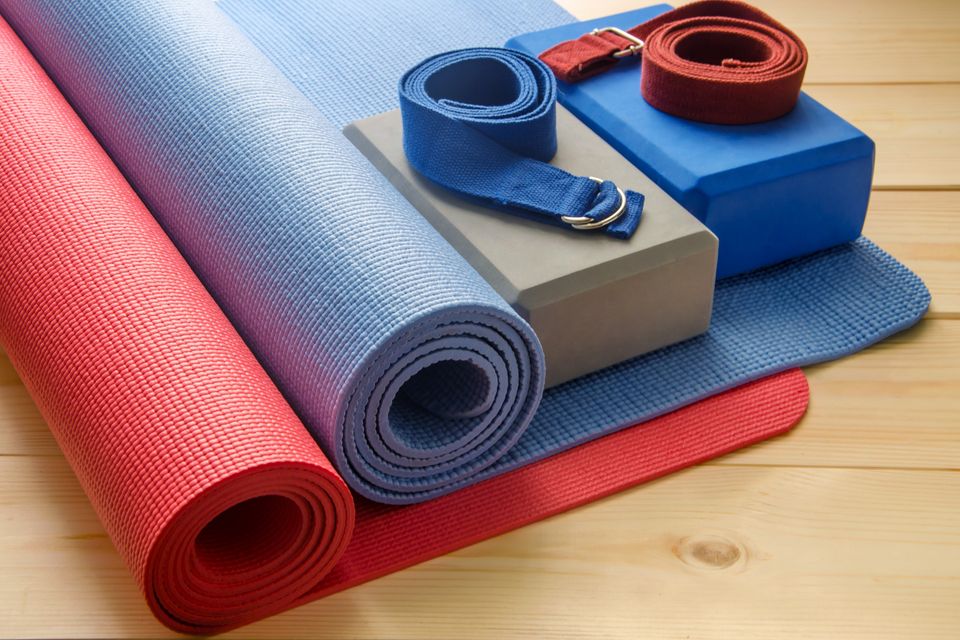
Yoga Equipment
Yoga is a popular practice that combines physical postures, breathing exercises, and meditation to promote overall well-being and improve flexibility, strength, and relaxation. While yoga can be practiced with minimal equipment, there are certain yoga accessories and equipment that can enhance your practice and take it to the next level. Here are some common yoga equipment items:
Yoga Mat: A yoga mat is an essential item for practicing yoga. It provides a comfortable and non-slip surface to perform yoga poses, protecting your joints and providing stability.
Yoga Blocks: Yoga blocks are typically made of foam, cork, or wood and are used to support different parts of the body during yoga poses. They help improve alignment, provide stability, and make poses more accessible, especially for beginners.
Yoga Strap: A yoga strap is a flexible strap made of cotton or nylon. It is used to extend your reach and improve flexibility in poses where your hands cannot reach or grasp comfortably. Straps are particularly useful for stretching and deepening stretches.
Yoga Bolster: A yoga bolster is a firm, supportive cushion usually filled with cotton or foam. It is used to provide support and relaxation during restorative yoga poses or meditation. Bolsters can help improve alignment, release tension, and promote relaxation.
Yoga Blanket: Yoga blankets are versatile props that can be used for support, cushioning, or warmth during yoga practice. They can be folded or rolled up to provide height and support in seated or reclined poses or used to cover yourself during relaxation or meditation.
Yoga Wheel: A yoga wheel is a circular prop made of a sturdy, supportive material like plastic or wood. It is designed to help open up the chest, shoulders, and back, improve flexibility, and deepen yoga poses. Yoga wheels can also be used for balance and core-strengthening exercises.
Meditation Cushion: Also known as a zafu or meditation pillow, a meditation cushion provides support and comfort during seated meditation or pranayama (breathing exercises). They help maintain proper posture, relieve pressure on the knees and ankles, and promote a relaxed and focused meditation practice.
Yoga Mat Towel: A yoga mat towel is a thin, absorbent towel that is placed over your yoga mat. It helps absorb sweat, improve grip, and prevent your mat from becoming slippery during a vigorous or hot yoga practice.
Yoga Straps: Yoga straps are long, sturdy bands with buckles or loops at the ends. They are used to assist in stretching, deepen poses, or enhance flexibility by providing additional support and leverage.
Yoga Clothing: While not technically equipment, comfortable and breathable clothing is important for a successful yoga practice. Choose clothing that allows you to move freely and doesn't restrict your movements.
These are some of the common yoga equipment items that can enhance your yoga practice. However, it's important to note that while these accessories can be beneficial, they are not essential. You can still practice yoga with just a yoga mat and comfortable clothing.
Yoga Mat: A yoga mat is an essential item for practicing yoga. It provides a comfortable and non-slip surface to perform yoga poses, protecting your joints and providing stability.
Yoga Blocks: Yoga blocks are typically made of foam, cork, or wood and are used to support different parts of the body during yoga poses. They help improve alignment, provide stability, and make poses more accessible, especially for beginners.
Yoga Strap: A yoga strap is a flexible strap made of cotton or nylon. It is used to extend your reach and improve flexibility in poses where your hands cannot reach or grasp comfortably. Straps are particularly useful for stretching and deepening stretches.
Yoga Bolster: A yoga bolster is a firm, supportive cushion usually filled with cotton or foam. It is used to provide support and relaxation during restorative yoga poses or meditation. Bolsters can help improve alignment, release tension, and promote relaxation.
Yoga Blanket: Yoga blankets are versatile props that can be used for support, cushioning, or warmth during yoga practice. They can be folded or rolled up to provide height and support in seated or reclined poses or used to cover yourself during relaxation or meditation.
Yoga Wheel: A yoga wheel is a circular prop made of a sturdy, supportive material like plastic or wood. It is designed to help open up the chest, shoulders, and back, improve flexibility, and deepen yoga poses. Yoga wheels can also be used for balance and core-strengthening exercises.
Meditation Cushion: Also known as a zafu or meditation pillow, a meditation cushion provides support and comfort during seated meditation or pranayama (breathing exercises). They help maintain proper posture, relieve pressure on the knees and ankles, and promote a relaxed and focused meditation practice.
Yoga Mat Towel: A yoga mat towel is a thin, absorbent towel that is placed over your yoga mat. It helps absorb sweat, improve grip, and prevent your mat from becoming slippery during a vigorous or hot yoga practice.
Yoga Straps: Yoga straps are long, sturdy bands with buckles or loops at the ends. They are used to assist in stretching, deepen poses, or enhance flexibility by providing additional support and leverage.
Yoga Clothing: While not technically equipment, comfortable and breathable clothing is important for a successful yoga practice. Choose clothing that allows you to move freely and doesn't restrict your movements.
These are some of the common yoga equipment items that can enhance your yoga practice. However, it's important to note that while these accessories can be beneficial, they are not essential. You can still practice yoga with just a yoga mat and comfortable clothing.

Proper Diet for Yoga
A proper diet for yoga should support your overall well-being, provide energy, and promote mental clarity. Here are some general guidelines for a balanced diet that complements your yoga practice:
Whole Foods: Focus on consuming whole, unprocessed foods as much as possible. Include plenty of fresh fruits, vegetables, whole grains, legumes, nuts, and seeds in your diet. These foods are nutrient-dense and provide essential vitamins, minerals, and fiber.
Hydration: Stay properly hydrated by drinking an adequate amount of water throughout the day. Water helps maintain the balance of bodily fluids, supports digestion, and aids in detoxification.
Mindful Eating: Practice mindful eating by paying attention to your body's hunger and fullness cues. Eat slowly, chew your food thoroughly, and savor each bite. This helps improve digestion and prevents overeating.
Balanced Macronutrients: Include a balance of macronutrients in your meals. Your diet should consist of carbohydrates, proteins, and healthy fats. Carbohydrates provide energy, proteins support muscle repair and growth, and healthy fats are essential for brain function and overall health.
Plant-based Options: Consider incorporating more plant-based foods into your diet. Plant-based diets have been associated with numerous health benefits and align well with the principles of yoga, such as compassion for all living beings.
Moderate Portions: Be mindful of portion sizes to prevent overeating. Eating smaller, frequent meals throughout the day can help maintain steady energy levels and prevent feelings of sluggishness.
Avoid Processed Foods: Minimize or avoid processed and refined foods, including sugary snacks, sodas, fast food, and packaged meals. These foods are often high in unhealthy fats, added sugars, and artificial additives, which can negatively impact your health and vitality.
Listen to Your Body: Every individual is unique, so it's important to listen to your body and pay attention to how different foods make you feel. Some people may have specific dietary needs or sensitivities, so adjust your diet accordingly based on what works best for you.
Remember, yoga is not just about the physical practice but also about cultivating awareness and harmony in all aspects of life, including your diet. Consult with a registered dietitian or healthcare professional for personalized guidance based on your specific needs and health conditions.
Whole Foods: Focus on consuming whole, unprocessed foods as much as possible. Include plenty of fresh fruits, vegetables, whole grains, legumes, nuts, and seeds in your diet. These foods are nutrient-dense and provide essential vitamins, minerals, and fiber.
Hydration: Stay properly hydrated by drinking an adequate amount of water throughout the day. Water helps maintain the balance of bodily fluids, supports digestion, and aids in detoxification.
Mindful Eating: Practice mindful eating by paying attention to your body's hunger and fullness cues. Eat slowly, chew your food thoroughly, and savor each bite. This helps improve digestion and prevents overeating.
Balanced Macronutrients: Include a balance of macronutrients in your meals. Your diet should consist of carbohydrates, proteins, and healthy fats. Carbohydrates provide energy, proteins support muscle repair and growth, and healthy fats are essential for brain function and overall health.
Plant-based Options: Consider incorporating more plant-based foods into your diet. Plant-based diets have been associated with numerous health benefits and align well with the principles of yoga, such as compassion for all living beings.
Moderate Portions: Be mindful of portion sizes to prevent overeating. Eating smaller, frequent meals throughout the day can help maintain steady energy levels and prevent feelings of sluggishness.
Avoid Processed Foods: Minimize or avoid processed and refined foods, including sugary snacks, sodas, fast food, and packaged meals. These foods are often high in unhealthy fats, added sugars, and artificial additives, which can negatively impact your health and vitality.
Listen to Your Body: Every individual is unique, so it's important to listen to your body and pay attention to how different foods make you feel. Some people may have specific dietary needs or sensitivities, so adjust your diet accordingly based on what works best for you.
Remember, yoga is not just about the physical practice but also about cultivating awareness and harmony in all aspects of life, including your diet. Consult with a registered dietitian or healthcare professional for personalized guidance based on your specific needs and health conditions.
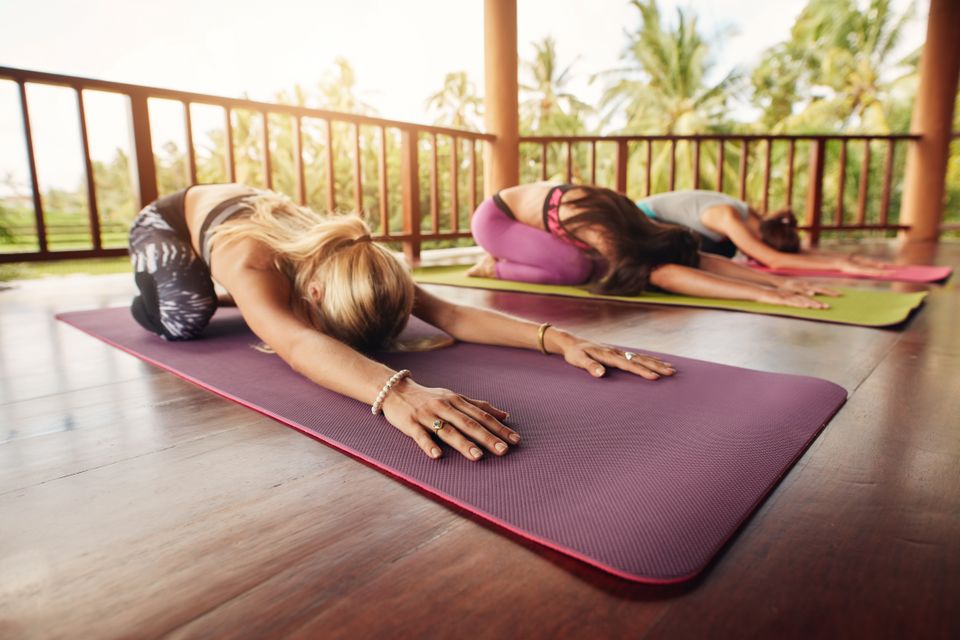
Choosing the Best Yoga Mat
Choosing the best yoga mat depends on several factors, including your personal preferences, the type of yoga you practice, and your budget. Here are some key considerations to help you make an informed decision:
Thickness: Yoga mats come in different thicknesses, typically ranging from 1/16 inch to 1/4 inch. Thicker mats provide more cushioning and support for your joints, while thinner mats offer better stability and balance. Choose a thickness that suits your comfort level and the type of yoga you practice. For example, if you primarily do gentle or restorative yoga, a thicker mat may be more suitable.
Material: Yoga mats are commonly made from PVC (polyvinyl chloride), natural rubber, or other eco-friendly materials like cork or jute. PVC mats are durable and provide good grip, but they may contain harmful chemicals. Natural rubber mats offer excellent grip and are more environmentally friendly. Eco-friendly mats made from cork or jute are also gaining popularity due to their sustainable properties.
Texture and Grip: Consider the texture and grip of the mat. A sticky, non-slip surface helps prevent your hands and feet from slipping during poses. Some mats have a raised texture or pattern for added grip, while others are smoother. Try to test the mat's grip if possible before making a purchase.
Size: Most standard yoga mats are around 68 inches long and 24 inches wide. However, taller individuals may prefer longer mats to ensure they have enough space for their entire body. Additionally, if you prefer more room to move around or if you practice certain styles of yoga that require more space, you may want to consider a wider mat.
Portability: If you plan to carry your mat to yoga classes or while traveling, consider its weight and portability. Lighter mats are easier to carry, but they may sacrifice some cushioning. Look for mats that are lightweight and come with carrying straps or bags for convenience.
Price: Set a budget for your yoga mat. Prices can vary widely depending on the brand, material, and quality. While it's important to invest in a durable and high-quality mat, there are options available at different price points to suit various budgets.
Reviews and Recommendations: Read reviews and seek recommendations from other yogis or trusted sources to get insights into different mat options. Learning from others' experiences can help you make a more informed decision.
Remember that personal preferences and comfort are crucial when choosing a yoga mat. It's always a good idea to try out different mats if possible or consult with a knowledgeable yoga instructor or practitioner to find the best fit for your needs.
Thickness: Yoga mats come in different thicknesses, typically ranging from 1/16 inch to 1/4 inch. Thicker mats provide more cushioning and support for your joints, while thinner mats offer better stability and balance. Choose a thickness that suits your comfort level and the type of yoga you practice. For example, if you primarily do gentle or restorative yoga, a thicker mat may be more suitable.
Material: Yoga mats are commonly made from PVC (polyvinyl chloride), natural rubber, or other eco-friendly materials like cork or jute. PVC mats are durable and provide good grip, but they may contain harmful chemicals. Natural rubber mats offer excellent grip and are more environmentally friendly. Eco-friendly mats made from cork or jute are also gaining popularity due to their sustainable properties.
Texture and Grip: Consider the texture and grip of the mat. A sticky, non-slip surface helps prevent your hands and feet from slipping during poses. Some mats have a raised texture or pattern for added grip, while others are smoother. Try to test the mat's grip if possible before making a purchase.
Size: Most standard yoga mats are around 68 inches long and 24 inches wide. However, taller individuals may prefer longer mats to ensure they have enough space for their entire body. Additionally, if you prefer more room to move around or if you practice certain styles of yoga that require more space, you may want to consider a wider mat.
Portability: If you plan to carry your mat to yoga classes or while traveling, consider its weight and portability. Lighter mats are easier to carry, but they may sacrifice some cushioning. Look for mats that are lightweight and come with carrying straps or bags for convenience.
Price: Set a budget for your yoga mat. Prices can vary widely depending on the brand, material, and quality. While it's important to invest in a durable and high-quality mat, there are options available at different price points to suit various budgets.
Reviews and Recommendations: Read reviews and seek recommendations from other yogis or trusted sources to get insights into different mat options. Learning from others' experiences can help you make a more informed decision.
Remember that personal preferences and comfort are crucial when choosing a yoga mat. It's always a good idea to try out different mats if possible or consult with a knowledgeable yoga instructor or practitioner to find the best fit for your needs.
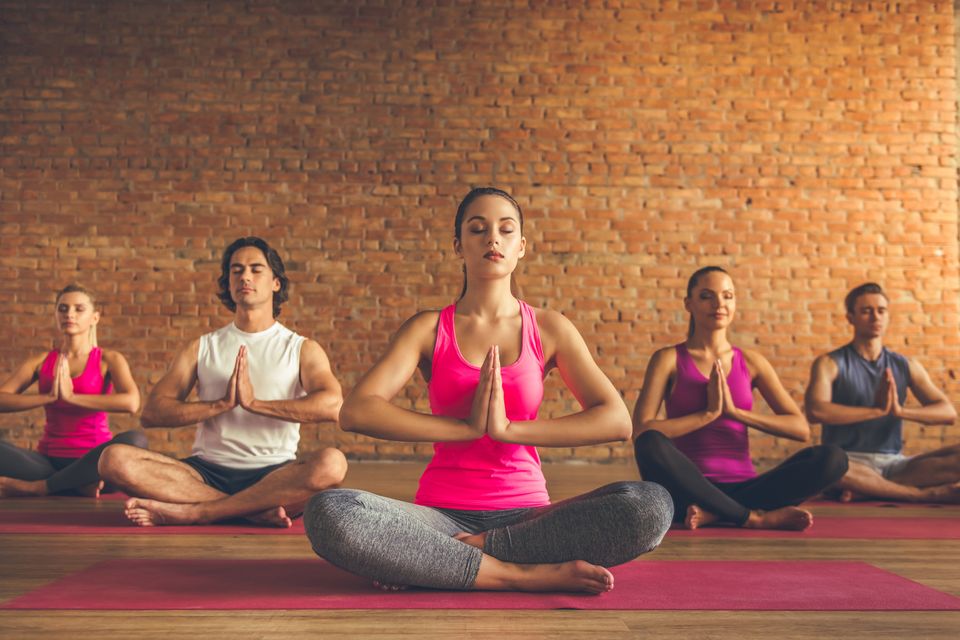
What to Wear During Yoga
When performing yoga, it's important to wear clothing that allows for comfortable movement and flexibility. Here are some guidelines on what to wear for a yoga session:
Yoga Pants/Leggings: Opt for stretchy and form-fitting pants or leggings made from breathable fabric like cotton or moisture-wicking materials. These will allow you to move freely and comfortably during various poses without restrictions.
Yoga Shorts/Capris: If you prefer shorter bottoms, you can choose yoga shorts or capris that provide ample coverage while allowing your legs to breathe.
Yoga Tops/Tank Tops: Wear tops that are lightweight, moisture-wicking, and breathable. Tank tops or T-shirts made from fabrics like cotton or bamboo are popular choices. Ensure that the top is not too loose, as it may slide down or interfere with certain poses.
Sports Bra: For women, a well-fitting sports bra is essential to provide adequate support during yoga practice. Look for one that offers comfort, flexibility, and good coverage.
Layers: If you're practicing yoga in a cooler environment or during colder seasons, consider layering your clothing. You can start with a comfortable tank top or T-shirt and add a lightweight long-sleeved shirt or a sweatshirt that you can remove as your body warms up during the session.
Socks: Yoga is generally performed barefoot to maintain grip and stability on the mat. However, if you prefer to wear socks, choose ones specifically designed for yoga that have gripping soles or anti-slip features.
Accessories: Keep accessories to a minimum. Remove any jewelry that might get in the way or cause discomfort during the practice. Hair ties or headbands can help keep your hair away from your face.
Remember, the key is to prioritize comfort and freedom of movement in your clothing choices. Choose breathable fabrics that allow your skin to breathe and wick away moisture. Ultimately, wear what makes you feel comfortable and allows you to fully engage in your yoga practice.
Yoga Pants/Leggings: Opt for stretchy and form-fitting pants or leggings made from breathable fabric like cotton or moisture-wicking materials. These will allow you to move freely and comfortably during various poses without restrictions.
Yoga Shorts/Capris: If you prefer shorter bottoms, you can choose yoga shorts or capris that provide ample coverage while allowing your legs to breathe.
Yoga Tops/Tank Tops: Wear tops that are lightweight, moisture-wicking, and breathable. Tank tops or T-shirts made from fabrics like cotton or bamboo are popular choices. Ensure that the top is not too loose, as it may slide down or interfere with certain poses.
Sports Bra: For women, a well-fitting sports bra is essential to provide adequate support during yoga practice. Look for one that offers comfort, flexibility, and good coverage.
Layers: If you're practicing yoga in a cooler environment or during colder seasons, consider layering your clothing. You can start with a comfortable tank top or T-shirt and add a lightweight long-sleeved shirt or a sweatshirt that you can remove as your body warms up during the session.
Socks: Yoga is generally performed barefoot to maintain grip and stability on the mat. However, if you prefer to wear socks, choose ones specifically designed for yoga that have gripping soles or anti-slip features.
Accessories: Keep accessories to a minimum. Remove any jewelry that might get in the way or cause discomfort during the practice. Hair ties or headbands can help keep your hair away from your face.
Remember, the key is to prioritize comfort and freedom of movement in your clothing choices. Choose breathable fabrics that allow your skin to breathe and wick away moisture. Ultimately, wear what makes you feel comfortable and allows you to fully engage in your yoga practice.
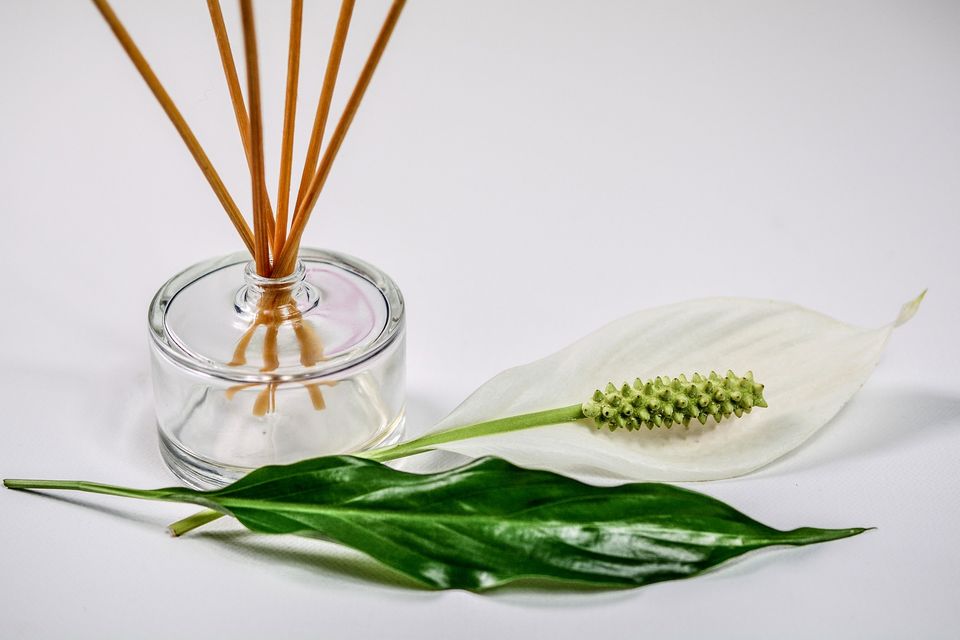
Aromatherapy During Yoga
Aromatherapy can be a wonderful addition to enhance your yoga session. The use of essential oils during yoga practice can help create a calming and soothing atmosphere, deepen your breath awareness, and promote relaxation and focus. Here are some Aromatherapy selections to consider during your next yoga session:
Diffusion: Use an essential oil diffuser to disperse the aroma throughout the room. Choose essential oils known for their relaxing properties, such as lavender, chamomile, or ylang-ylang. These scents can help create a tranquil environment and support a peaceful state of mind during your yoga practice.
Topical application: Dilute a few drops of essential oil in a carrier oil, such as coconut or almond oil, and apply it to your wrists, temples, or the back of your neck before your yoga session. This can help you benefit from the aroma throughout your practice. Be sure to choose oils that are safe for topical application and suitable for your skin type.
Aromatherapy spray: Create a homemade aromatherapy spray by combining distilled water with a few drops of your favorite essential oil. Shake well and spritz the air or your yoga mat before you begin your practice. This method can help refresh the space and add an uplifting or calming scent to enhance your yoga experience.
Scented props: Consider using scented props, such as lavender-filled eye pillows or essential oil-infused yoga mats. These props can provide additional sensory stimulation and relaxation during your practice.
Essential oil-infused candles: Light an aromatherapy candle before or during your yoga session to create a warm and inviting ambiance. Choose candles made with natural ingredients and essential oils rather than synthetic fragrances.
Remember to choose essential oils that you enjoy and that align with your intentions for your yoga practice. It's essential to use high-quality essential oils and to be mindful of any sensitivities or allergies you may have. If you're new to aromatherapy, start with a small amount of oil and gradually increase the intensity if desired. Enjoy the benefits of combining aromatherapy with your yoga practice, and may it enhance your overall well-being and mindfulness.
Diffusion: Use an essential oil diffuser to disperse the aroma throughout the room. Choose essential oils known for their relaxing properties, such as lavender, chamomile, or ylang-ylang. These scents can help create a tranquil environment and support a peaceful state of mind during your yoga practice.
Topical application: Dilute a few drops of essential oil in a carrier oil, such as coconut or almond oil, and apply it to your wrists, temples, or the back of your neck before your yoga session. This can help you benefit from the aroma throughout your practice. Be sure to choose oils that are safe for topical application and suitable for your skin type.
Aromatherapy spray: Create a homemade aromatherapy spray by combining distilled water with a few drops of your favorite essential oil. Shake well and spritz the air or your yoga mat before you begin your practice. This method can help refresh the space and add an uplifting or calming scent to enhance your yoga experience.
Scented props: Consider using scented props, such as lavender-filled eye pillows or essential oil-infused yoga mats. These props can provide additional sensory stimulation and relaxation during your practice.
Essential oil-infused candles: Light an aromatherapy candle before or during your yoga session to create a warm and inviting ambiance. Choose candles made with natural ingredients and essential oils rather than synthetic fragrances.
Remember to choose essential oils that you enjoy and that align with your intentions for your yoga practice. It's essential to use high-quality essential oils and to be mindful of any sensitivities or allergies you may have. If you're new to aromatherapy, start with a small amount of oil and gradually increase the intensity if desired. Enjoy the benefits of combining aromatherapy with your yoga practice, and may it enhance your overall well-being and mindfulness.
